Ecommerce content marketing is the process of creating and sharing valuable, relevant content to attract customers, build trust, and guide them toward a purchase without being pushy. This could be helpful blog posts, useful video tutorials, and engaging social media they actually want to see.
When you get this right, you build a real relationship with shoppers, turning them into loyal fans instead of one-time buyers. You stop interrupting people with ads and become a brand they seek out for advice.
For Amazon sellers, this means creating content that not only improves your product detail page but also drives external traffic and builds your brand’s authority off the platform.
The goal is to become an essential resource. For example, a company selling kitchen knives doesn’t just sell steel. They provide recipes, knife-skill tutorials, and guides on choosing the right blade. This builds a community and establishes them as experts.
Having a clear roadmap for your content is critical to succeeding in a crowded online marketplace. A well-defined ecommerce content strategy makes sure every piece of content serves a purpose, from finding new shoppers to keeping the ones you have.
This article breaks down 11 essential types of ecommerce content marketing you can use to grow your brand. We’ll look at practical steps for each, from product-focused content and SEO-driven blogs to video marketing and influencer collaborations.
1. Product-Focused Content Marketing
This type of content is all about creating detailed, valuable information directly about the products you sell. This is more than a simple description; it’s an immersive experience that includes in-depth guides, comparison charts, detailed specifications, and customer reviews. This strategy targets buyers who are close to making a purchase by giving them all the details they need to feel confident. When you answer every potential question, you remove doubt and build trust.
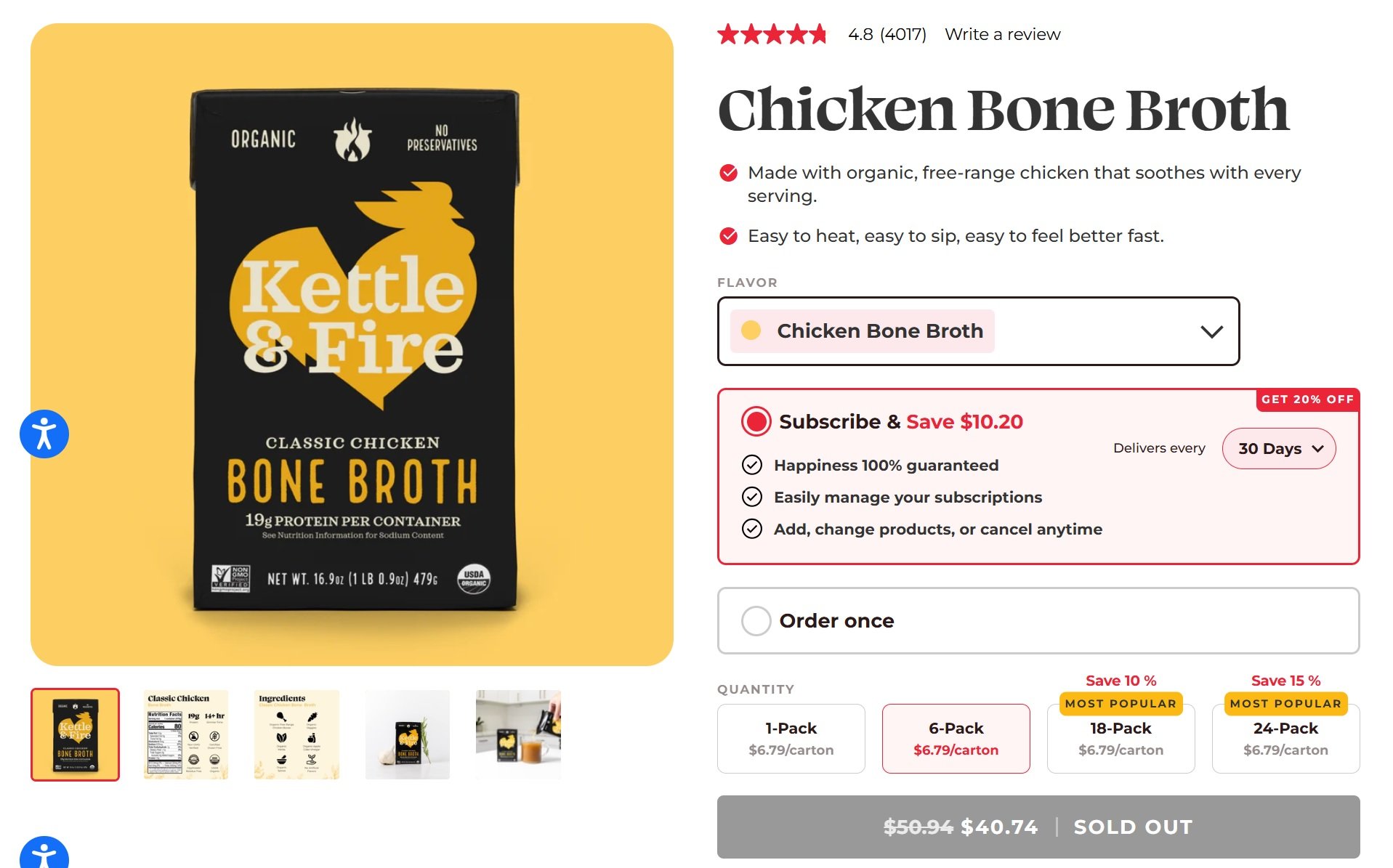
On Amazon, you see this in A+ Content. These modules let you go beyond standard bullet points and text by adding rich visuals, brand stories, and technical layouts. For instance, a brand selling a high-tech blender might use A+ Content to show a lifestyle image of a family making smoothies, followed by a chart comparing its motor power to competitors, and then a graphic explaining its self-cleaning function.
How to Implement It:
- Create Detailed Product Guides: Write a comprehensive guide on your blog about how to use your product. If you sell a skincare serum, you could create a guide titled “The Right Way to Layer Vitamin C Serum in Your Morning Routine.”
- Use Comparison Tables: If you sell multiple versions of a product, build a clear comparison table. This helps customers quickly see the differences in features and price, guiding them to the best choice.
- High-Quality Visuals: Invest in professional photography, 360-degree product views, and short videos showing the product in use. Visuals get the point across much faster than text alone.
- Optimize for Specific Questions: Think about what your customers are asking. Optimize your product content for long-tail keywords like, “What is the best coffee maker for a small apartment?” or “How to clean a cast-iron skillet?”
This approach directly supports the sales process, reduces returns, and improves customer satisfaction. For new sellers, this is foundational for a successful launch. Find out more in this guide to a successful Amazon product launch on ecombrainly.com.
2. Blog Content and Educational Resources
Blogging and educational resources help establish your brand as an authority in your niche. This ecommerce content marketing strategy involves creating valuable, informative articles and tutorials that address your audience’s problems and questions. By consistently publishing helpful content, you attract organic traffic from search engines, nurture potential customers, and build a community that trusts your brand long before they’re ready to buy.
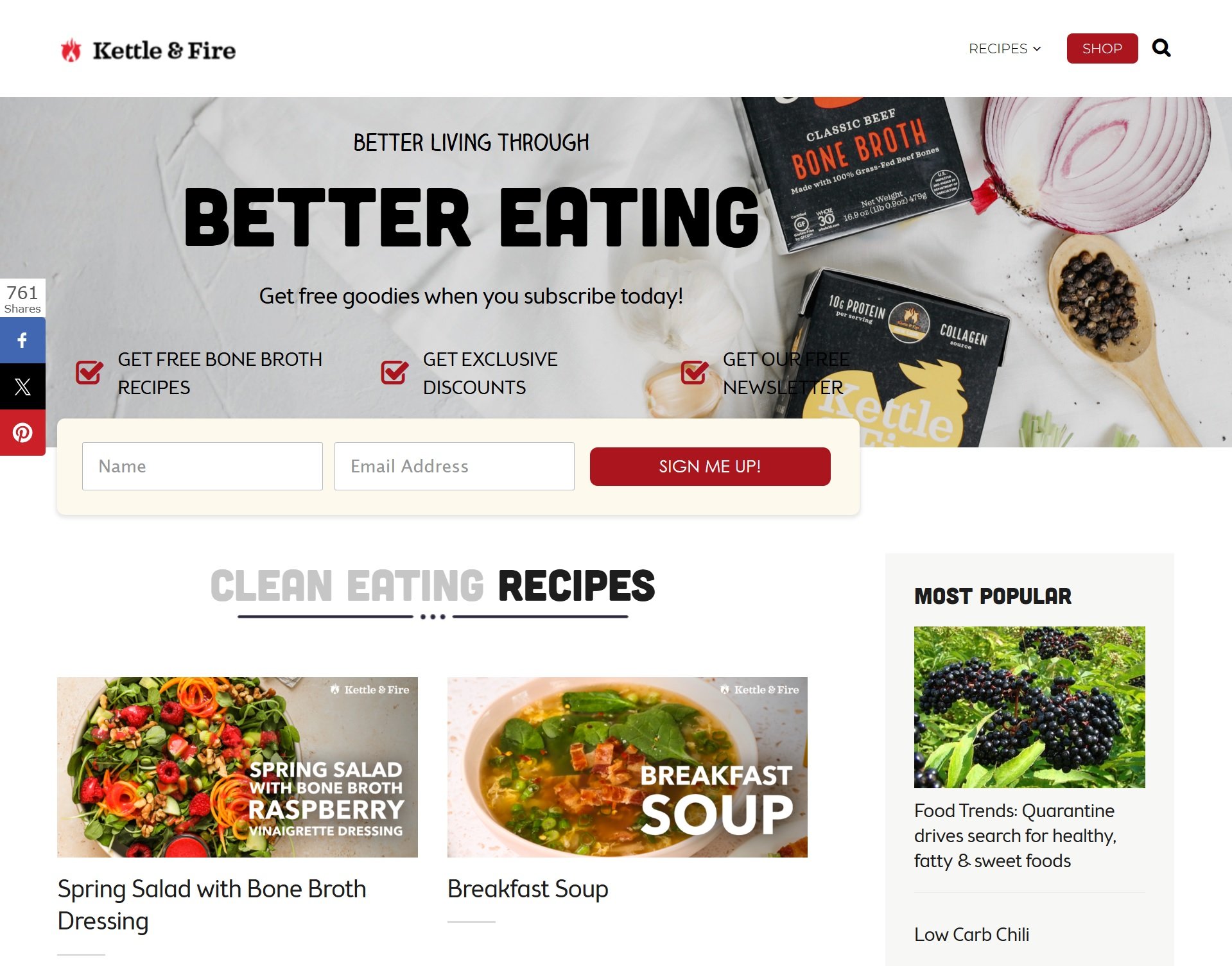
A great example is the Kettle & Fire blog, which publishes educational articles about nutrition, gut health, and the benefits of bone broth. By offering value through recipes, wellness tips, and ingredient insights, Kettle & Fire attracts health-conscious readers who may later become customers. Similarly, a brand selling organic dog food could create blog posts like “10 Human Foods That Are Safe for Your Dog” or “A Vet’s Guide to Switching Your Dog’s Diet”, drawing in pet owners looking for reliable information.
How to Implement It:
- Perform Keyword Research: Use tools like Ahrefs or Semrush to find topics your target audience is searching for. Focus on informational keywords that relate to the problems your products solve.
- Create an Editorial Calendar: Plan your content at least a few months ahead. This ensures you publish consistently and can align topics with seasonal trends or product launches.
- Write In-Depth, Helpful Posts: Don’t just skim the surface. Create comprehensive articles that genuinely help the reader. Use data, stats, and expert quotes to build credibility.
- Incorporate Natural Calls-to-Action (CTAs): Within your content, link to relevant products or category pages where it makes sense. For instance, in an article about improving sleep, you can naturally mention and link to your blackout curtains.
- Update and Repurpose Content: Every year, review your top-performing blog posts. Update statistics, add new information, and keep them fresh. You can also repurpose successful articles into infographics or videos.
This strategy is perfect for building long-term brand equity and generating qualified leads. For new sellers, it’s a solid way to build an audience. You can find more foundational advice in this complete guide on how to start an ecommerce business on Amazon at ecombrainly.com.
3. Video Marketing and Product Demonstrations
Video marketing is a key part of ecommerce content marketing because it shows products in action. This strategy involves creating engaging video content like product demos, unboxing experiences, and brand stories. Videos grab attention more effectively than text, increasing engagement and helping customers visualize how a product fits into their lives. This builds an emotional connection and provides clarity, which often leads to higher conversion rates.
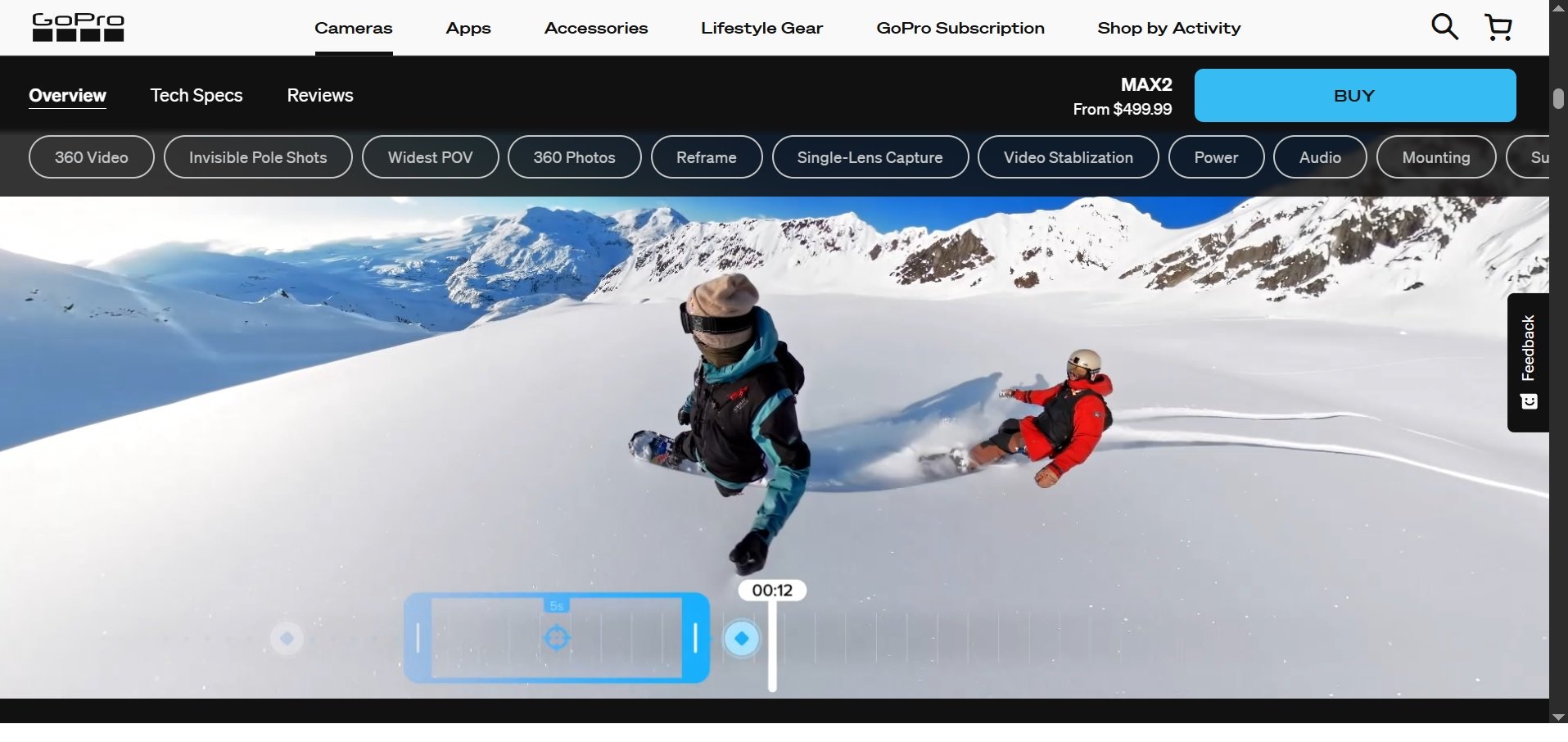
Blendtec’s “Will It Blend?” series showed that product demos can be viral entertainment, while GoPro built its brand on user-generated action footage. For Amazon sellers, video is a powerful tool on product detail pages. A short video showing a complex product’s setup or a lifestyle video demonstrating a fashion item’s fit can answer questions that images can’t. This boosts buyer confidence and helps reduce returns.
How to Implement It:
- Create Compelling Product Demos: Film short, high-energy videos that highlight your product’s key features and solve a specific customer problem. Focus on the benefits, not just the technical specs.
- Produce “How-To” and Tutorial Videos: Show your audience how to get the most out of your product. For a kitchen gadget, this could be a recipe video; for a beauty product, it could be an application tutorial.
- Optimize for Search and Accessibility: Write keyword-rich titles and descriptions for your videos on platforms like YouTube. Always include subtitles for sound-off viewing (which is common on social media) and create transcripts to improve accessibility.
By adding video to your ecommerce content marketing, you create a more immersive and trustworthy shopping experience. For brands looking to expand their reach, learning the fundamentals of creating high-converting video ads is a smart next step. Also, remember that your video content must follow platform-specific guidelines; you can learn more about Amazon image requirements and video standards to stay compliant.
4. Social Media Content and Community Building
Social media is a great tool for ecommerce content marketing that goes beyond sales pitches to build a loyal community. It involves creating and sharing content on platforms like Instagram, TikTok, and Facebook to engage with customers and build relationships.
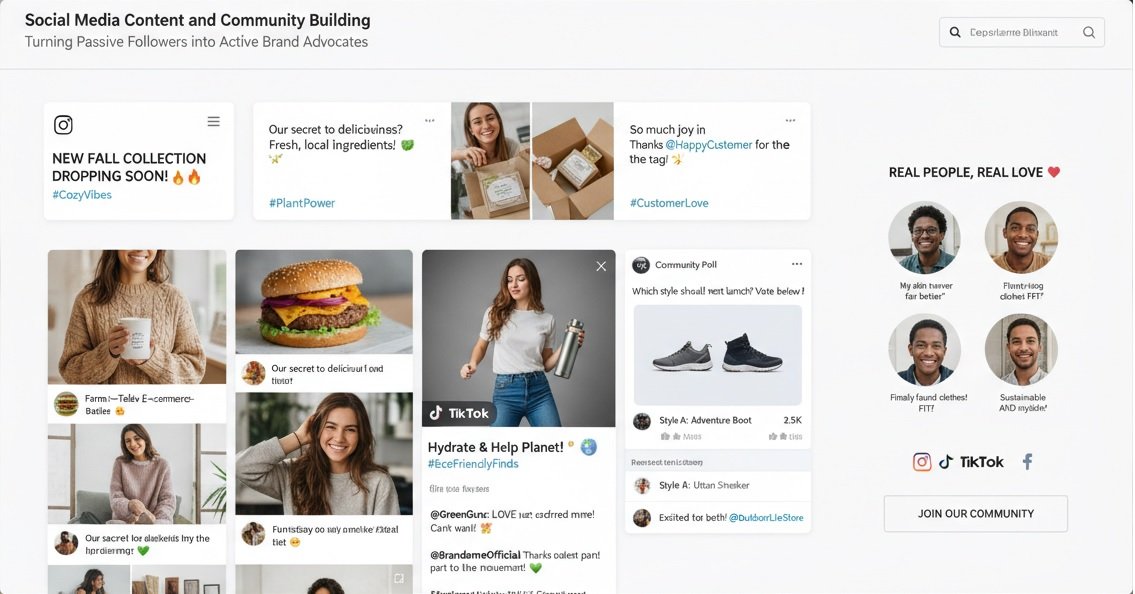
This strategy focuses on creating a two-way conversation, turning passive followers into active brand advocates who feel connected to your mission. For an ecommerce brand, your social channels can become a hub for customer feedback, social proof, and brand discovery.
How to Implement It:
- Encourage User-Generated Content (UGC): Create a unique, branded hashtag and encourage customers to share photos or videos using your products. A home decor brand could run a contest for the “best room makeover” featuring their items. This provides authentic content and powerful social proof.
- Create Platform-Specific Content: Don’t just cross-post the same content everywhere. Adapt your message for each platform. Use high-quality visuals for Instagram, short-form educational videos for TikTok, and community polls for Facebook Groups.
- Partner with Micro-Influencers: Collaborate with influencers who have a smaller but highly engaged following in your niche. Their audience trusts their recommendations, making their endorsements feel more genuine.
- Engage Actively and Consistently: Don’t just post and leave. Respond to comments and direct messages quickly. Ask questions in your captions, run polls in your Stories, and go live to answer questions in real-time to make your community feel heard.
By making community building a core part of your ecommerce content marketing, you grow brand loyalty that lasts. Platforms like TikTok offer huge potential for brands to connect with new audiences. To get started, check out this guide on how to sell on TikTok Shop in 2024 at ecombrainly.com.
5. Email Marketing and Personalization
Email marketing is about building targeted campaigns that nurture leads, retain customers, and drive repeat purchases. Email is still one of the highest ROI channels in ecommerce. This strategy focuses on sending the right message to the right person at the right time, using segmentation, personalized content, and automation to build a direct relationship with your audience.
This is a core part of effective ecommerce content marketing because it allows brands to own their audience, independent of marketplace algorithms. For example, Sephora’s VIP program uses tier-based emails to offer exclusive perks to its most loyal customers. Similarly, Warby Parker uses effective abandoned cart emails with a helpful tone to recover potentially lost sales. These personalized touchpoints turn one-time buyers into repeat customers.
How to Implement It:
- Segment Your Audience: Don’t send the same email to everyone. Segment your list based on purchase history, browsing behavior, or location. A customer who bought hiking boots should get different content than one who bought casual sneakers.
- Automate Triggered Emails: Set up automated email flows for key customer actions. This includes welcome series for new subscribers, abandoned cart reminders, post-purchase follow-ups asking for a review, and birthday discounts.
- Personalize Content at Scale: Use merge tags to include the customer’s first name. Go further by dynamically inserting product recommendations based on their past purchases, just like Amazon’s “Customers who bought this also bought…” feature.
- Maintain List Hygiene: Regularly clean your email list by removing inactive subscribers. This improves your sender reputation and ensures better deliverability.
By using this approach, you create a powerful channel for customer communication that directly impacts sales and loyalty. It’s an essential part of long-term customer retention. You can learn more by reading a detailed guide to customer retention management on ecombrainly.com.
6. Influencer and Affiliate Marketing
Influencer and affiliate marketing uses the credibility of established creators to promote your products. Instead of shouting your message to a cold audience, you partner with trusted voices who introduce your brand to their loyal followers. This strategy builds social proof and drives sales through authentic recommendations, effectively borrowing the trust an influencer has built. It’s a powerful form of ecommerce content marketing that can reach new customers almost instantly.
This model works great for brands in visual niches like fashion, beauty, and fitness. For example, the apparel brand Gymshark built its business by sponsoring fitness athletes and influencers who authentically used their gear. Their audience sees the products being used in a real-world context, which is far more persuasive than a traditional ad. Similarly, Fashion Nova grew by collaborating with thousands of micro-influencers, flooding Instagram with content that felt genuine.
How to Implement It:
- Prioritize Authenticity Over Follower Count: Look for influencers whose content and values genuinely align with your brand. A micro-influencer with 10,000 highly engaged followers in your niche can drive more sales than a macro-influencer with 1 million disengaged followers.
- Establish Clear Tracking: Provide unique affiliate tracking links or custom discount codes to each partner. This allows you to accurately measure the ROI of each collaboration.
- Co-Create Content: Instead of giving influencers a rigid script, work with them to develop content that feels natural to their style. The best content comes from collaboration.
- Build Long-Term Relationships: One-off posts can provide a temporary sales lift, but long-term ambassador programs create sustained brand advocacy. Nurture these relationships to turn influencers into true partners.
By working with influencers, you add a layer of human connection and trust to your ecommerce content marketing, making your brand more discoverable.
7. Customer Testimonials and Case Studies
Customer testimonials and case studies are a form of ecommerce content marketing that uses social proof to build credibility. This strategy involves showcasing real customer stories and reviews to demonstrate your product’s value. By presenting authentic experiences from verified buyers, you allow potential customers to see themselves in the success of others, making it one of the most persuasive marketing tools you have.
You can see this approach on platforms like Shopify, where successful merchant stories are a key part of the brand’s marketing. Shopify regularly features articles and videos about how entrepreneurs used its platform to build thriving businesses. Similarly, B2B companies like Slack use detailed case studies to show how enterprises improved productivity, complete with real numbers. This transforms a customer’s positive experience into a compelling narrative for new leads.
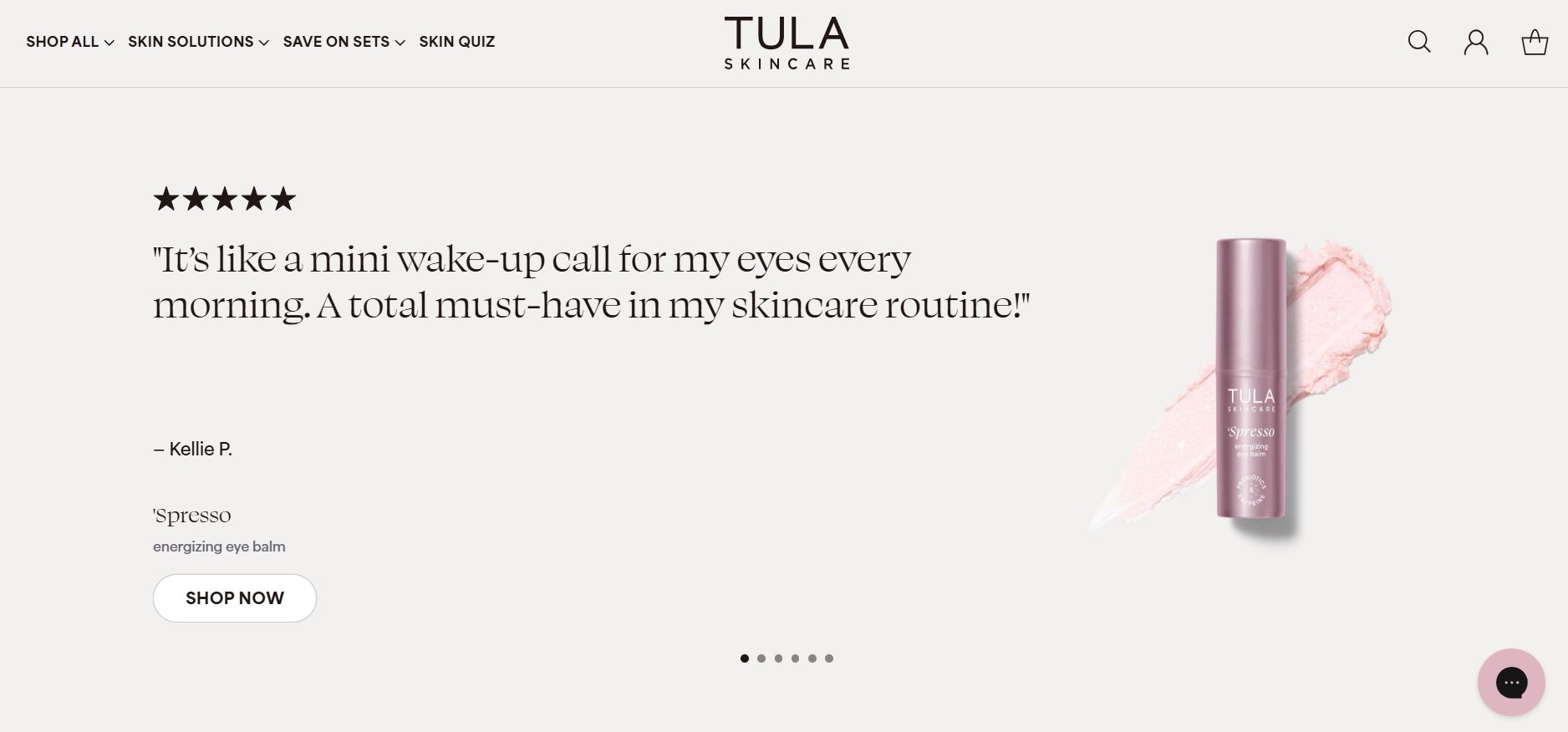
How to Implement It:
- Systematize Review Collection: Use automated emails to request reviews a certain number of days after a product is delivered. Make the process easy with direct links to the review submission page.
- Create Video Testimonials: Identify your most enthusiastic customers and invite them to record a short video testimonial. These are highly engaging and can be used on your product pages, social media, and in ad campaigns.
- Develop Data-Rich Case Studies: For higher-priced items, work with clients to create detailed case studies. Quantify the results by highlighting specific metrics, like a “40% reduction in production time.”
- Showcase Reviews Strategically: Don’t just hide reviews on a separate page. Integrate star ratings and positive reviews directly onto your product pages, near the “Add to Cart” button, to build immediate trust.
By using the voice of your happy customers, you turn them into your most effective sales team. This form of ecommerce content marketing is crucial for building a trustworthy brand that converts skeptical shoppers.
8. Content Personalization and Dynamic Content
Content personalization is the practice of using customer data to deliver tailored experiences. Instead of a one-size-fits-all approach, dynamic content adapts based on who is viewing it, showing them the most relevant products and offers. This strategy makes the shopping experience feel more intuitive and helpful. Giants like Amazon and Netflix have mastered this, making it a key part of modern ecommerce content marketing.
For an ecommerce brand, this might mean showing different homepage banners to first-time visitors versus returning customers. A new visitor might see a “10% Off Your First Order” banner, while a loyal customer sees new arrivals based on their past purchases. Similarly, dynamic product recommendations can populate a product page with items frequently bought together. This hyper-relevant approach increases conversion rates by making customers feel understood.
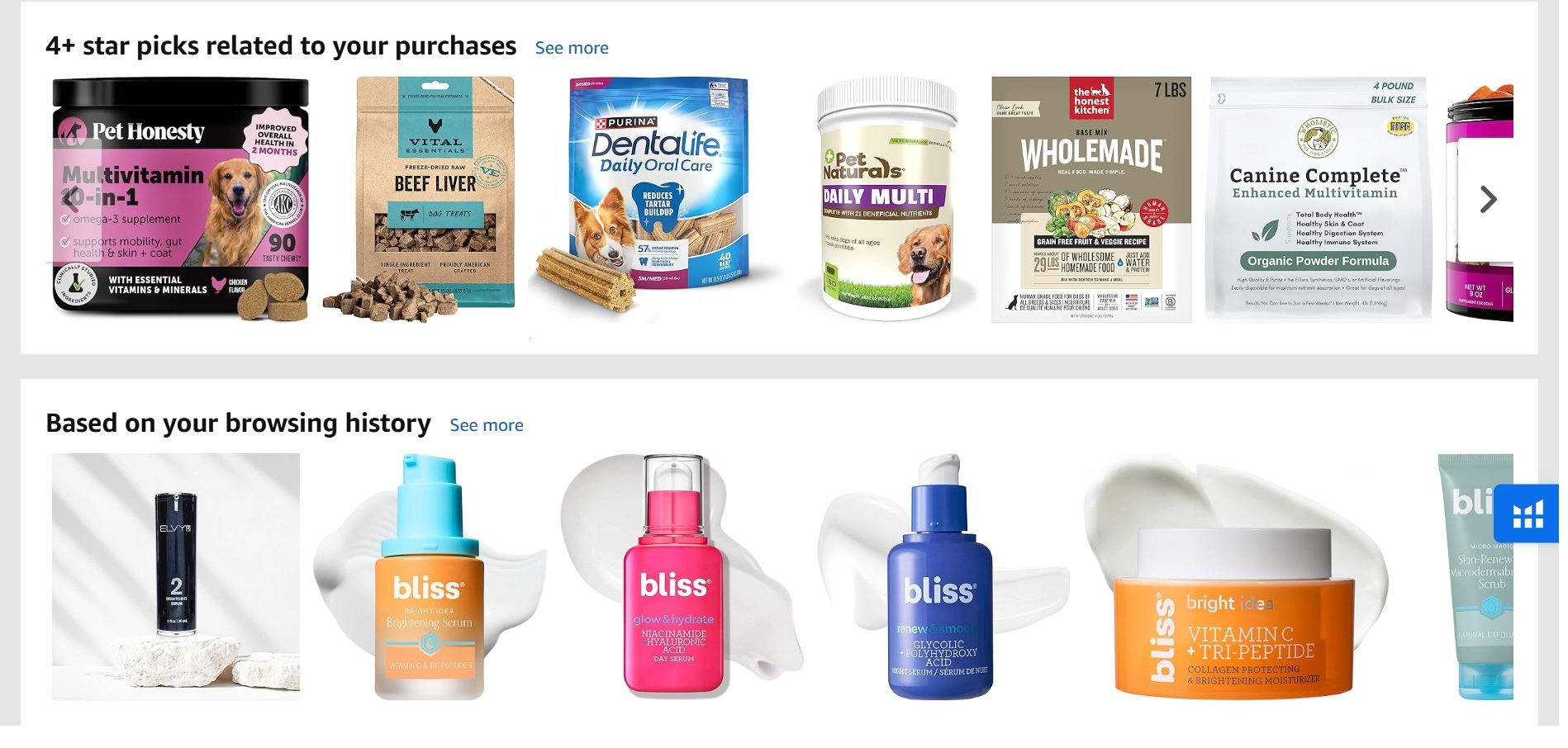
How to Implement It:
- Segment Your Audience: Group your customers based on data like purchase history, browsing behavior, or location. For example, create segments for “high-value customers” or “first-time buyers.”
- Use Dynamic Product Recommendations: Integrate tools that automatically suggest products based on a user’s activity. Showcase “You Might Also Like” or “Inspired by Your Browsing History” sections on product pages and in emails.
- Personalize Email Marketing: Go beyond using a customer’s first name. Send targeted emails with product recommendations based on their last purchase or abandoned cart items.
- Create Adaptive Landing Pages: Use dynamic content tools to change headlines or images on your landing pages based on the ad a visitor clicked. If they clicked an ad for “men’s winter coats,” the landing page should prominently feature that category.
By tailoring content, you create a more engaging path to purchase, which improves sales and builds long-term customer loyalty.
9. SEO-Optimized Content and Technical SEO
SEO-optimized content is the practice of creating and structuring your website’s information to rank higher in search engines. Perform better keyword research, on-page optimization, and technical site health to attract high-intent organic traffic. By earning top spots on Google for relevant searches, you connect with customers actively looking for products like yours.
Industry leaders like Ahrefs and Backlinko have built entire businesses on this principle. They create comprehensive guides that completely satisfy a user’s search, causing them to rank #1 for extremely competitive terms. For an ecommerce brand, this means creating content that answers questions like “best hiking boots for rocky trails” or “how to choose an espresso machine.” This strategy transforms your brand into a trusted resource.
How to Implement It:
- Conduct In-Depth Keyword Research: Use tools like Ahrefs or Semrush to find what your target audience is searching for. Focus on informational keywords (“how to”) and commercial keywords (“best,” “review”) that align with your products.
- Master On-Page SEO: Optimize every piece of content. This includes placing your primary keyword in the URL, title tag, meta description, and first 100 words. Use related keywords throughout the text to build topical authority.
- Address Technical SEO: Ensure your site is technically sound. This means having a fast load speed, a mobile-friendly design, and a clean URL structure. A poor technical foundation can prevent even the best content from ranking.
- Build High-Quality Backlinks: Earn links from reputable websites in your niche. You can do this through guest posting or by creating original research that others will want to link to.
By integrating a strong SEO strategy into your ecommerce content marketing, you build a sustainable asset that generates traffic and sales without continuous ad spend.
10. Interactive Content and Quizzes
Interactive content goes beyond static blog posts by creating experiences that require user participation. This includes quizzes, calculators, and product configurators that engage audiences on a deeper level. Instead of passively consuming information, customers become part of the content, which increases their time on your site and creates a memorable brand interaction. This approach is highly effective for capturing valuable data and guiding users to personalized product recommendations.
For instance, TULA uses a beauty quiz to help customers find their ideal skincare products. These tools don’t just sell a product; they solve a customer’s problem in a fun, engaging way.

How to Implement It:
- Develop a Product Recommendation Quiz: Create a short, visually appealing quiz that helps customers find the right product. A brand selling coffee could ask about flavor preferences and brewing methods to recommend the perfect blend.
- Build a Useful Calculator: If you sell products where measurements are important, a calculator can be invaluable. A paint company could offer a calculator to estimate how much paint is needed for a room, directly linking to the required products.
- Create Personalized Assessments: For complex products like skincare or supplements, an assessment can guide users. SkinCeuticals offers a “Personalized Skincare Routine” finder that diagnoses skin concerns and suggests a full regimen.
- Use Polls and Surveys for Engagement: Integrate simple polls and surveys into your blog posts or social media stories to gather customer opinions. This also provides valuable feedback for your ecommerce content marketing plan.
11. Answer Engine Optimization (AEO) Optimization
Answer Engine Optimization (AEO) prepares your content for AI tools like ChatGPT, Google Gemini, and Perplexity, where shoppers now ask questions in chat instead of searching keywords. The goal is to make your content easy for these AI systems to read, understand, and recommend in their answers.
Brands like HubSpot and Semrush are already adapting their content for this shift by writing in short, clear sections, using FAQs, and focusing on genuinely helpful information. For ecommerce sellers, this means creating content that directly answers real customer questions like “What’s the best protein powder for beginners?” in a natural, concise way.
How to Implement It:
- Structure for Clarity: Use short paragraphs, descriptive subheadings, and bulleted lists. This makes your content easier for AI systems to read and summarize.
- Add Schema Markup: Include FAQ, HowTo, and Product schema to help both Google and AI engines understand your content’s purpose and context.
- Emphasize Expertise and Experience: Write from real-world knowledge or firsthand product use as AI systems prioritize original, credible voices.
- Answer Likely AI Queries: Within your content, include short, direct answers to common questions your customers might ask an AI (e.g., “What are the healthiest bone broths?”).
- Monitor AI Mentions: Track whether your brand appears in AI-generated responses using tools like AlsoAsked, Glasp, or ChatGPT Search Mentions.
By preparing your content for the AI-driven search era, you future-proof your brand’s visibility ensuring your products remain discoverable, even as search behavior shifts from Google results to AI answers.
Ecommerce Content Marketing Strategy Comparison
| Strategy | Implementation Complexity | Resource Requirements | Key Advantages |
|---|---|---|---|
| Product-Focused Content | Medium | Product writers, photographers, SEO | Directly influences purchase decisions |
| Blog & Educational Content | Medium | Writers, editors, SEO tools | Low long-term cost, broad reach |
| Video Marketing | High | Camera/lighting, editors, hosting | Best for engagement, emotional connection |
| Social Media & Community | Medium | Community manager, creators, ad spend | Direct engagement, builds loyalty |
| Email & Personalization | Medium | ESP (Klaviyo), copywriter, data | Owned channel with high ROI |
| Influencer & Affiliate | Medium | Partnership management, budget | Authentic endorsement, performance-based |
| Testimonials & Case Studies | Low-Medium | Customer outreach, review platforms | High impact for low cost, social proof |
| Content Personalization | High | CDP, personalization engine, engineers | Relevance at scale, measurable results |
| SEO Content & Technical | Medium-High | SEO specialists, developer support | Lowest long-term cost, durable advantage |
| Interactive Content & Quizzes | High | Designers, developers, SaaS tools | Captures customer data, strong engagement |
| Answer Engine Optimization (AEO) | Medium | SEO expert, content strategist | Future-proofs visibility as search behavior shifts from Google to AI answer engines |
Putting Everything Into Action
You’ve just walked through solid ecommerce content marketing tactics. Each one is designed to connect with customers at different stages of their buying journey. Now, it’s time to choose what makes sense for your brand and your resources. Focusing deeply on one or two strategies will get you better results than trying to do everything at once.
“Consistency in content creation drives both search ranking and buyer trust.”
This principle connects every tactic. Whether you’re writing a blog post or filming a product demo, a steady publishing schedule helps you build an audience and improve your organic rank.
What to Do Next
The goal isn’t to master all strategies overnight. It’s to choose a starting point, execute it well, and build from there.
- Pick ONE strategy to focus on for the next 90 days. If you’re a strong writer, focus on SEO-driven blog posts.
- Define a clear goal for that strategy. Is it to increase organic traffic by 20%? Or to get 1,000 new email subscribers? Be specific.
- Create a simple content calendar. Plan out what you’ll create each week. Consistency is more important than volume.
- Measure your results. Use Google Analytics or your platform’s built-in tools to see what’s working. If a piece of content performs well, create more like it.
By focusing on well-executed ecommerce content marketing, you build trust, improve your product’s discoverability, and lower your cost of sale. Success rarely comes from random efforts. Commit to a plan, start small, and measure what matters. Your first few wins will provide the momentum you need to grow your brand.





